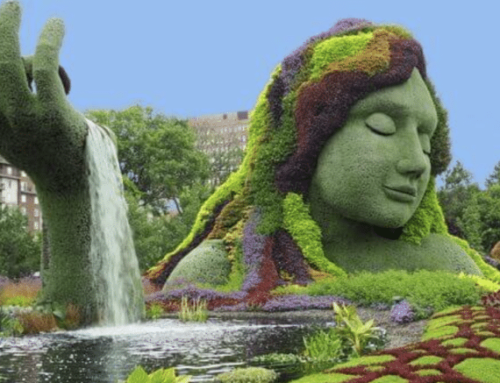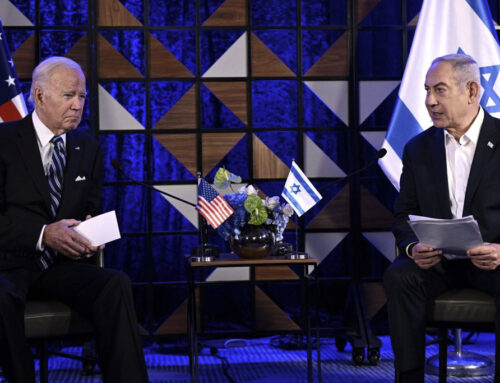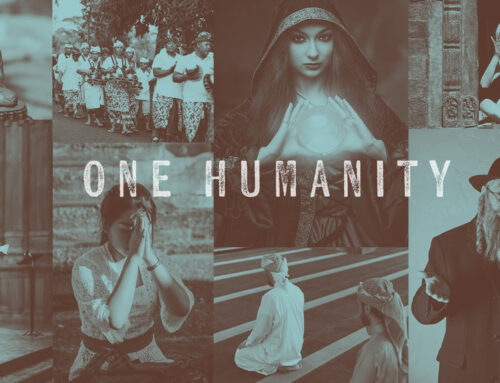This 1962 photo shows some of the parents and children who brought suit against public schoolroom prayer in Engel v. Vitale (1962). In this case, the Supreme Court said the prayer violated the First Amendment. (AP Photo, used with permission from the Associated Press)
I’m old enough to remember my teachers in elementary school leading my class in prayer to God each morning before we commenced the day’s education. I mentioned this not long ago to a man I know who is only 10 years younger than me and he was amazed at this fact. He at first doubted what I said. Isn’t it incredible what we think we know when we don’t know a lot at all? Especially history. That really hasn’t transpired all that long ago in the timeline in American history, which is but a belch in the timeline of human history.
No student, no teacher was ordered or forced to pray or lead a prayer. If a student or a teacher did not want to participate they could abstain. It was a time when freedom still existed in America and evil did not dictate and attempt to control everyone, a time when freedom reigned rather than tyranny and fascism.
Then one day my teachers no longer began our school day with a prayer to God.
All the so-called legal experts, Constitutional lawyers, judges, Supreme Court justices, and talking heads, the ignorant reciters of what is written on cue cards at one time, now TelePrompters chirp and squawk and recite like trained talking birds about “the establishment clause” of the First Amendment.
As if a classroom of students, of any age, any place in America, or on a football field, or a teacher or coach leading them in prayer is a subversive movement to establish a singular governmental religion!
Think about this folks. The whole basis of eliminating prayer, removing God, and removing the Bible from any and all public venues, buildings, schools, and meetings are based upon the “establishment clause” out of fear of a person leading a prayer at a city council meeting, a classroom, or such is an attempt to establish a national religion!
Today permitting prayers to Satan to be offered up in city council meetings, and other public places and venues, and prayers from Islam, Buddhism, and Hinduism to be permitted — just don’t allow or get caught praying to the One True God, Creator of all things, or praying to the Lord Jesus Christ in America!
Think about the stupidity, the total lunacy, and just how lost, well, all those who use this as their reasoning are not lost in following the footsteps of Satan as he leads them about, but how lost they are with regard to logic, our foundations, rational thought, reason, critical thinking, and the truth!
Satan keeps them that way. Satan likes them that way.
In the case of Engel v. Vitale (1962), the U.S. Supreme Court justice who wrote up the opinion was Hugo Black.
If I write here there was a man from Alabama back in the 1930s who became a U.S. Senator and eventually a Supreme Court justice who was a known member of the Ku Klux Klan I imagine what would enter almost to a person the thought would be, “He had to be a flaming right-wing ultra-conservative white supremacist Republican!”
Ahh, that’s the trouble with assumptions and stereotypes.
People end up being misinformed and wrong more times than discovering the facts and the truth of a matter.
No, Hugo Black was a pure democrat. A Democratic U.S. Senator from Alabama and a liberal U.S. Supreme Court justice.
Anyone who belongs to an organization that can’t spell simple words such as “clan” properly does not deserve to serve in the U.S. Senate or sit on the bench of the U.S. Supreme Court, yet we eagerly embrace and install such servants of Satan year in and year out. While the overwhelming majority of people in this lost nation listen to and abide by what such people as that say rather than abiding by what the Word of God says.
Yeah, I used to pray each morning in the school I attended. Until the early 1960s.
I guess all of us subversive 9, 10, and 11-year-olds plotting, along with those really dangerous teachers I had trying to create a national religion proved too much for all those “good people” in the American government who only want to protect everyone from such rebellious and dangerous subversives as those who acknowledge our Creator and desire to serve Him, honor Him, trust in Him.
When all we wanted to do, all we were doing was praying to God our Creator.
There are three fairly short articles below pertaining to this subject.
I sincerely hope you’ll continue on and read them all.
Then do something more than just read them and move on.
Hey, I am a radical and dangerous subversive, lest you forget that! As every true child of God is, as every true disciple of the Lord Jesus Christ is to those who serve Satan and his lies, and this world!
Ken Pullen, A CROOKED PATH, Tuesday, July 19th, 2022
Engel v. Vitale (1962)
By David L. Hudson Jr.
Reprinted from The First Amendment Encyclopedia
In Engel v. Vitale, 370 U.S. 421 (1962), the Supreme Court ruled that school-sponsored prayer in public schools violated the establishment clause of the First Amendment. The case involved a 22-word nondenominational prayer recommended to school districts by the New York Board of Regents: “Almighty God, we acknowledge our dependence upon Thee, and we beg Thy blessings upon us, our parents, our teachers and our Country.”
Parents said officially sponsored school prayer violated the First Amendment
The Union Free School District in New Hyde Park, N.Y., adopted the recommendation and instituted a practice whereby teachers led students in the prayer every morning. The practice was voluntary, and students could be excused without punishment upon written request from their parents.
Steven Engel and several other parents challenged the officially sponsored prayer as a violation of the First Amendment. Engel, a Jewish man, believed that the state should not impose a one-size-fits-all prayer upon children of many different faiths or no faith. The plaintiffs lost before the Supreme Court of New York in 1959, the Appellate Division of the Supreme Court of New York in 1960, and the Court of Appeals of New York in 1961, none of which viewed the prayer practice as the establishment of an official religion.
Engel and the others appealed to the U.S. Supreme Court, which ruled in favor of the parents in a 6-1 vote (Justices Felix Frankfurter and Byron R. White did not participate).
Supreme Court struck down the prayer
Writing for the majority, Justice Hugo L. Black focused on the history of religious discrimination and intolerance in England and the early Colonial days of the United States. This history, according to Black, showed that by the time of the adoption of the U.S. Constitution Americans had a “widespread awareness . . . of the dangers of a union of Church and State.”
Black did not cite a single U.S. Supreme Court case in the text of his majority opinion, although he cited Everson v. Board of Education (1947) in a footnote. Instead, he cited a variety of secondary sources on the history and struggle for religious liberty. According to Black, “the First Amendment was added to the Constitution to stand as a guarantee that neither the power nor the prestige of the Federal Government would be used to control, support or influence the kinds of prayer the American people can say.”
Black concluded that “government in this country should stay out of the business of writing or sanctioning official prayers and leave that purely religious function to the people.”
Justice William O. Douglas wrote a concurring opinion, contending that “once government finances a religious exercise it inserts a divisive influence into our communities.”
Justice Potter Stewart wrote the lone dissent. He argued that the majority “misapplied a great constitutional principle” and denied public schoolchildren “the opportunity of sharing in the spiritual heritage of our Nation.” He noted that history and tradition showed many religious influences and elements in society, such as “In God We Trust” on the nation’s money, opening sessions of the Supreme Court with “God Save This Honorable Court,” the opening prayers in Congress, and the many acknowledgments of God by various presidents in public speeches.
Decision caused public outrage and criticism
The decision caused outrage among many and harsh criticism of the Warren Court. Engel said that he and his family members suffered obscene phone calls, taunts, and community ostracism.
The decision led the Court to strike down similar school-sponsored prayers in the consolidated cases of Abington School District v. Schempp and Murray v. Curlett (1963).
Principles of Engel have been extended to other cases
The principles of Engel have been extended by Court decisions invalidating an Alabama law requiring a moment of silence that appeared to have been rewritten specifically to encourage school prayer in Wallace v. Jaffree (1985), a middle school graduation school prayer in Lee v. Weisman (1992), and prayer at high school football games in Santa Fe Independent School District v. Doe (2000).
David L. Hudson, Jr. is a law professor at Belmont who publishes widely on First Amendment topics. He is the author of a 12-lecture audio course on the First Amendment entitled Freedom of Speech: Understanding the First Amendment (Now You Know Media, 2018). He also is the author of many First Amendment books, including The First Amendment: Freedom of Speech (Thomson Reuters, 2012) and Freedom of Speech: Documents Decoded (ABC-CLIO, 2017). This article was originally published in 2009.
Prayer in Public Schools
By Hana M. Ryman and J. Mark Alcorn
Reprinted from The First Amendment Encyclopedia
Terri Thompson, 11, leads her fourth grade class in a short prayer at the start of the day in a public school in the Dorchester section of Boston on Feb. 5, 1980. Massachusetts law requires teachers to ask the students if anyone would like to offer prayer for the class. Any student who does not wish to participate may leave the classroom. (AP Photo/Benoit, used with permission from The Associated Press.)
Prayer at public school events is a controversial and complicated topic because it can involve three clauses of the First Amendment: the establishment clause, the free exercise clause, and the free speech clause. The Supreme Court has shown particular concern with subtle and not-so-subtle coercive pressures in elementary and secondary schools.
Court has declared that prayer in public schools violated establishment clause
As early as Engel v. Vitale (1962), the Supreme Court declared that public prayer in public schools violated the establishment clause. In this instance, a prayer approved by the New York state board of regents was read over the intercom during the school day when students were required to be in attendance.
Other public events are slightly different, because attendance is not viewed as mandatory in most cases. In many cases, however, these public events are, essentially, required events, and the Court has considered them to be such. In Lee v. Weisman (1992), the Court held 5-4 that claiming a teenage student in contemporary society has a real choice not to attend his or her graduation was not at all realistic.
Similarly, in Santa Fe Independent School District v. Doe (2000), where a prayer prior to the start of football games was being challenged, the Court acknowledged that while student attendance at football games was mostly voluntary, the football players and cheerleaders did not have the option of leaving the premises during the reading of a prayer.
Court said prayers offered at public school graduation were not consistent with the First Amendment
In Lee v. Weisman (1992), parents of a public school student were challenging a practice of secondary principals in the public schools of Providence, Rhode Island, who customarily invited members of the clergy to give invocations and benedictions in graduation ceremonies. Robert E. Lee, the Nathan Bishop Middle School principal, invited Rabbi Leslie Gutterman to offer prayers at the graduation of Deborah Weisman’s class. Lee advised him the prayers should be non-sectarian. The girl’s parents disagreed with this practice and four days prior to the ceremony unsuccessfully sought a temporary restraining order to prevent the prayer. Following the ceremony, which they did attend, they filed suit to stop this practice in the future.
When the case reached the Supreme Court, the issue for the Court was whether including prayers, offered by clergy, as part of the official public school graduation ceremony was consistent with the religion clauses of the First Amendment. The majority opinion held it was an undeniable fact that the school district’s supervision and control of the ceremony placed public and peer pressure on attending students to stand as a group.
The opinion relied quite heavily on the argument that there are heightened concerns with protecting freedom of conscience from subtle coercion in the elementary and secondary public schools. The Court’s reasoning was that the district’s supervision and control of a middle or high school graduation ceremony places subtle and indirect pressures on attending students to stand as a group or maintain respectful silence during the invocation and benediction. A reasonable dissenter of high school age could believe that standing or remaining silent signified personal participation in, or approval of, the group exercise, rather than respect for it. In the opinion, the Court acknowledged that if the affected citizens were mature adults, the choice to stand or remain seated during the prayers could be viewed differently.
The federal courts of appeal have upheld prayer at university graduations. The Supreme Court, however, has yet to rule on a case in higher education. In this photo, graduate Megan Hollar bows her head during a moment of prayer at Emory University’s commencement ceremony Monday, May 9, 2011 in Atlanta. (AP Photo/David Goldman, used with permission from the Associated Press)
Court said that student-led prayer at football games violated the First Amendment
In Santa Fe, a Mormon and a Catholic family together challenged the practice of the high school in Santa Fe, Texas, of having a student council chaplain deliver a prayer, described as overtly Christian, over the public address system before each home varsity football game. The Supreme Court held that the school district’s policy permitting student-led, student-initiated prayer at football games violated the establishment clause.
The opinion concluded that the football game prayers were public speech authorized by a government policy, taking place on government property at government-sponsored school-related events, and the district’s policy involved both perceived and actual government endorsement of the delivery of prayer at important school events.
Federal courts have upheld prayer at college graduations
The federal courts of appeal have upheld prayer at university graduations. In 1997 the Seventh Circuit Court of Appeals said, in Tanford v. Brand, that Lee’s holding did not extend to college graduations, because college students were mature enough and not as easily coerced to stand and pray. The same year, in Chaudhuri v. State of Tennessee, the Sixth U.S. Circuit Court of Appeals upheld a graduation prayer at Tennessee State University, citing, as did the Seventh U.S. Circuit Court, the maturity of the students. The Supreme Court, however, has yet to rule on a case in higher education.
This article was originally published in 2009. J. Mark Alcorn is a high school and college history instructor in Minnesota. Hana M. Ryman is a Middle School Humanities Educator in Orlando, Florida.
A U.S. Supreme Court justice was in the Ku Klux Klan—and he remained on the bench for 34 years
Hugo Black was exposed just after his confirmation, but it made no difference
By Matt Reimann
Reprinted from Timeline
Justice Hugo L. Black declined to comment to reporters on his membership in the Ku Klux Klan, on Sept. 29, 1937. Asked where he could be reached later, he said “at my office in the Supreme Court Building.” (AP)
Hugo Black had been associate justice of the Supreme Court for less than a month when the news broke. In September of 1937, an exposé by the Pittsburgh Post-Gazette found proof of Black’s membership in the Ku Klux Klan. He had joined in September of 1923, and resigned in July, 1925, as one of his first moves before running for one of Alabama’s U.S. Senate seat. Ironically, the smoking gun was Black’s resignation letter, written in legible longhand on Klan stationery, which appeared on the paper’s front page.
Franklin Roosevelt, who nominated Hugo Black, was implicated in the scandal, which threatened to have far-reaching consequences for the president’s New Deal image. What was once seen as shrewd politics — the New Deal-friendly textualist was confirmed with a 63–16 vote — had become a disgrace. “Millions of Americans,” wrote one Indiana newspaper, “will not forget this sole tangible accomplishment of President Roosevelt’s attempted ‘liberalization’ of the Supreme Court.”
When asked by the press to remark on the scandal, Roosevelt brushed questions aside, saying, “I only know what I have read in the newspapers. I know that the stories are appearing serially and their publication is not complete. Mr. Justice Black is in Europe where, undoubtedly, he cannot get the full text of these articles. Until such time as he returns, there is no further comment to be made.”
Hugo Black had began practicing law in Birmingham, Alabama, in 1907, with occasional interruptions to serve as a police judge, a county prosecutor, and a captain during World War I. Corresponding to Black’s maturing career was the establishment of the Second Klan, which entered its Birth of a Nation–inspired phase in 1915. In only a few years, the Klan acquired significant power and influence in the city of Birmingham. And on September 11, 1923, Hugo Black joined the organization.
Black would leave the hate group in 1925, the year before his Senate run (which culminated in a victory, with over 80 percent of the vote in his favor). In joining the Klan at the time, Black was swept up in what FDR adviser Raymond Moley called “that dark political hour in the twenties when fiery crosses flared on thousands of hillsides,” placing him in the company of several other American leaders, including Senator Robert Byrd, Governor Edward L. Jackson, and fellow Alabaman Governor Bibb Graves, who put his wife Dixie in Black’s vacant senate seat upon his ascension to the Supreme Court.
Even before the exposé was published, rumors of Black’s ties to the Klan were well enough known that his association became a significant topic of his confirmation hearings. It seemed unlikely that Black would have won his Senate seat without the help and support of the Birmingham Klan, but his colleagues in the Senate made it clear that if Black had ever been a member, his Supreme Court nomination would be doomed. Black maintained a deliberate and misleading silence, and was confirmed, after six hours of debate, on August 17, 1937.

The confirmation process was unusually rocky for a sitting senator — since 1853, the Senate abided by a tradition of seamless approval for fellow members appointed to executive or judicial positions — and Black celebrated his success with a European holiday. The bliss was interrupted on September 13, when Pittsburgh journalist Ray Sprigle exposed Black’s KKK past in a reporting series that would win him a Pulitzer. Sprigle had proof, in addition to Black’s 1925 resignation letter, that Black had attended a “klorero,” a Klan state meeting, following his primary victory in 1926, where he was given a “grand passport” that declared the organization’s “sacred and unfailing bond.” An existing transcript from that meeting revealed that Black spoke to acknowledge the Klan’s integral support, and that he left unchallenged its attendees many racist declarations.
In a damage-control effort, Black delivered an 11-minute radio address on October 1, 1937, which decried racial and religious intolerance and praised the liberal politics of the New Deal. The broadcast was considered an extraordinary measure, as justices by tradition steered clear of addressing public controversies or scandals. In a rare measure, the address was carried by the country’s three major radio systems, to an audience of around 50 million people, a reach that even President Roosevelt acquired only occasionally.
Black did not deny involvement, nor did he equivocate. “I did join the Klan,” he admitted. “I later resigned. I never rejoined.” Of the grand passport that suggested extended if not lifelong affiliation, he said, “I never used it. I did not even keep it … Before becoming a senator I dropped the Klan. I have had nothing whatever to do with it since that time. I abandoned it. I completely discontinued any association with the organization. I have never resumed it and never expect to do so.” Regarding allegations of prejudice, he attempted to clear the air by saying that “Some of my best and most intimate friends are Catholics,” and added that the officiator of his will was Jewish.
Byand large, the response by the press was negative. The least severe opinions reflected the hope that a besmirched Black would be able to nonetheless move forward and approve Roosevelt’s urgent economic reforms. But the prevailing mood was that of disgust, disappointment, and skepticism. A columnist in the St. Louis Post-Dispatch wrote, “Black stands, by his own testimony, convicted of unfitness to be a member of the Supreme Court.” A writer at the Kansas City Star declared his appointment “a tragic offense against the American people,” with another calling the speech “humiliating talk,” while a journalist at a paper in Richmond, Virginia, observed that for all of Black’s apologies, “The specter of a white hood amid the black gowns of the court will not down.”
But the outrage did not lead to resignation or impeachment, and Black continued to serve on the Supreme Court for 34 years, proving one of its most influential justices. His voting record defies characterization as liberal or conservative. As a textualist, his rulings favored First Amendment freedoms and opposed segregation—he voted with the unanimous majority in Brown v. Board of Education—yet at the same time, he insisted the Constitution did not assert a right to privacy, allowing the state to legislate against birth control or tap civilian phones. But despite the Brown ruling, Black’s record on race was spotty at best. He wrote the majority opinion upholding Japanese internment and believed the law ought to be able to punish protesters at civil rights sit-ins.
As Black himself once said, “Show me the kind of steps a man made in the sand five years ago, and I will show you the kind of steps he is likely to make in the same sand five years hence.”










Leave a Reply, please --- thank you.